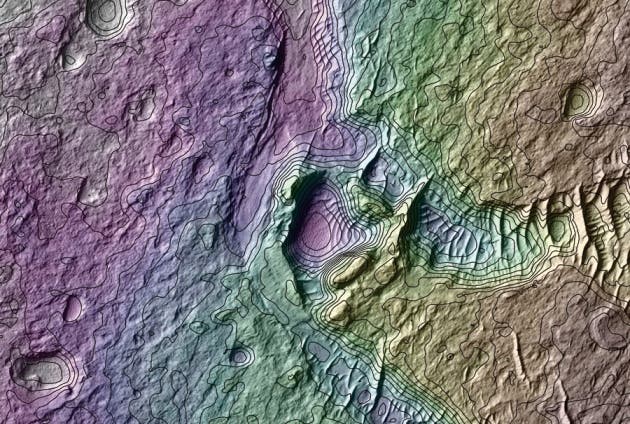
The Red Planet is dear to many of us. There’s a sort of brethren feeling, something that relates Earth and Mars together which makes people fond of the planet, but also at the same time weary. Weary because it’s dead planet, and because people don’t want the same thing to happen to Earth. The Martian deep canyons, flood sculpted lowlands or river canals speak of a time when Mars was home to a body of flowing water, thus similar to Earth, and maybe even harboring life. Now, researchers at Princeton University in New Jersey believe this isn’t quite the case – according to their findings ancient Mars, except for a few occasions during its history, couldn’t foster flowing water because its atmosphere was too thin and cold.
From the outside, Mars bears the sings of a once living planet, for a lack of a better term. This has prompted some to claim that the now barren wasteland planet was in fact warm and wet throughout its early history. For this to happen, first and foremost, Mars would have needed a thick atmosphere, something that is highly unlikely according to the findings of Edwin Kite, a planetary scientist at Princeton University in New Jersey, and his team.
Holes in the ground
The evidence, the researchers contend, lies in the planet’s craters. If Mars once had a thick atmosphere (today it is less than 1% that of Earth), than smaller objects would have broken down and either never reach the surface or produce less and smaller craters. The team looked at more than 300 craters pockmarking an 84,000-square-kilometre area near the planet’s equator. Ten per cent of the definite craters in that terrain — which has not changed much geologically for about 3.6 billion years — had diameters of 50 metres or less, and roughly 10% of features presumed to be the remnants of ancient craters were 21 metres across or smaller.
Based on this data, the researchers ran simulations using a range of atmospheric densities. Crater size wasn’t enough, however – velocity, angle of impact and crater distribution were also mindfully considered. With this in mind, the scientists found that the surface pressure exerted by the ancient Martian atmosphere was probably no more than 150 times its current value, corresponding to an atmosphere less than one-third what some teams say would be needed to consistently keep Mars’ surface above freezing.
So what of the canyons, the flooded sediments, all the striking canals that bear evidence of flowing water? Apparently, Mars would have been intermittently warm, with centuries long periods of high pressure, caused either by rising greenhouse gases following a massive cosmic impact or volcanic eruptions. Variations in the planet’s tilt axis could have warmed the planet and provided a protective atmosphere at times, as well. What the present evidence suggests, however, is that for the most part in its history, Mars was cold and devoid of flowing liquid water, with important consequences for alien life hypotheses. This might not apply to the Martian underground, as recent evidence suggests there may be flowing water even today.
Findings appeared in Nature Geoscience.






